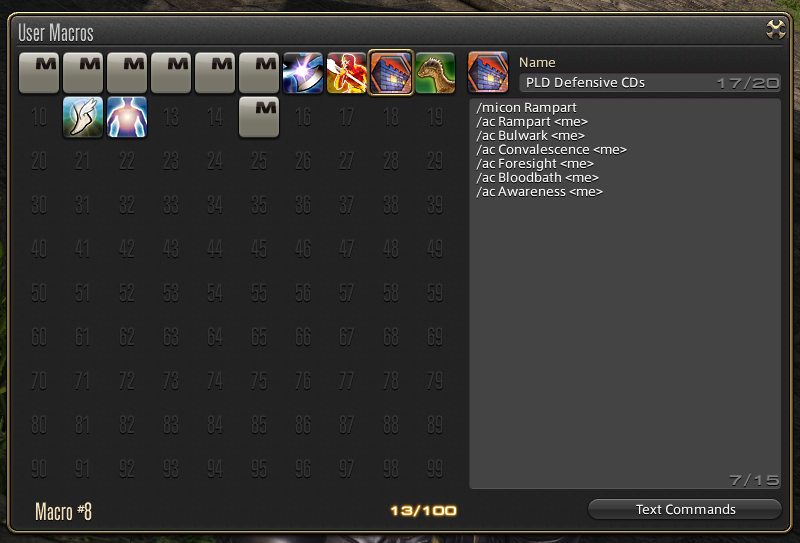I’m already forgetting the lessons of Blaugust. I might be a bit busier than I was then, but I should keep in mind that I don’t need to write an entire book every time I hit post. With that in mind, here are a few things that came up this past week in FFXIV. While the game balance at 50 is generally somewhere between “good” and “excellent”, there are a few periods where skill order makes no sense whatsoever. Lancers, for example, do the most DPS between the levels of 12-25 by spamming Impulse Drive, and ignoring the 2-step combo that they have. The Black mage rotation doesn’t really make sense until you have both Fire III and Blizzard III, which isn’t until 38. But the worst case of this in my opinion is the Paladin.
Skill Order
When you get your Job Stone as a warrior, the skill you get at Level 30 is Defiance. It improves your survivability, helps you hold threat, and allows you to build stacks that you can’t spend for five more levels. Paladins instead get Sword Oath, which increases the auto-attack damage you do (admittedly by a decent amount). The skill they get that increases their threat and survivability (Shield Oath) is withheld until level 40. The level 35 skill is Cover, which does not assist in threat or survivability. This wouldn’t be such a big problem, except that dungeons at this point start getting quite a bit more challenging (Brayflox’s Longstop and The Sunken Temple of Qarn are a giant wake-up call) and all DPS jobs get a massive stat boost from their job stones (and some of them also get important damage skills at 30). Unfortunately, this means that Paladins are at a rather large disadvantage, and I know from enough times healing and tanking Brayflox that it isn’t just player perception.
Problem Resolution
All is not lost: Paladins are perfectly capable of doing the content in this level range, it just takes a bit more work. It comes down to two things, really: Cooldowns and Target Switching.
Paladins are blessed with an entire suite of damage reduction cooldowns, and they can even steal the Warrior’s best one at that level range. In addition, the pace of combat in FFXIV is such that you can use something with a cooldown of 90 seconds about every other fight if you want. My first instinct when I was playing was to save cooldowns for emergencies, but you will get some more suited to this purpose later. Things like Convalescence, Foresight, and Rampart are nice to use whenever they make the healer’s life easier. Making their life easier then makes your life easier.
This one was a bit unintuitive to me at first too, but it’s useful and nearly required in the 30s. The only Paladin Combo that matters 95% of the time (Fast Blade->Savage Blade->Rage of Halone) has a threat modifier on the second hit, and a larger threat modifier on the third hit. It can be extremely helpful when tanking multiple things to land the second or third hit on something that isn’t your primary target, because Flash starts to not be enough in some cases. (These cases are named Summoner and Black Mage) On the other hand, if you have a strong single-target DPS in the party (Monk, Dragoon, Ninja) you might lose aggro on the primary target if you switch, so know when not to. If your party contains a Summoner and a Dragoon, mark targets and hope.

At the end of the tunnel
At level 40, you finally get Shield Oath (and will forget to use it roughly once a day for the rest of your time playing this class). At 38, you get Sentinel, a cooldown actually worth saving for emergencies (which is why it’s not in my macro). The dark days of the 30s don’t last forever, and once you get through them you’ll (hopefully) know how to be a better tank with lessons that once again apply once you have to deal with the class that can cast Flare. Have fun!

